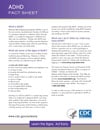This is a timely and well researched article. When I review my portfolio, the stocks that provide dividends and are large cap stocks, outperform the non-dividend stocks by a significant margin. In today's climate of very high uncertainty, and massive government interference, there are very few alternatives to move one's existing portfolio to. The dividend growth portfolio seems to answer the current need. The other alternative would be cash under the mattress !!
All the best,
Bob
Still Transitioning To A Dividend Growth Portfolio - Seeking Alpha
I am very pleased with the progress of my portfolio this quarter. Most of my goals for the year have already been exceeded and my approach and strategy have been further refined. The disheartening original four-figure portfolio has a couple more zeros on it now, and I have a little experience with common pitfalls.
If you would like more information on my investing journey, which many have mentioned has parallels to their own, here's a link to the original,"Transitioning To A Dividend Growth Portfolio", and a couple of instablogs. The comments on that article have dramatically shaped my thinking and research, and I look forward to that stretching experience again.
My primary goal, and the only purpose of my investing is to be able to afford to retire at a reasonable age (65-ish) 20+ years from now, and to be able to live off the dividends and income from those investments without needing to spend down the principle. My plan is to create sustainable wealth that will allow us to continue our simple lifestyle with ample room for generous giving. I hope that this wealth, and the accompanying values, will be passed down to my children and their children.
What are the biggest changes?
The biggest and most significant change to the portfolio this quarter is that I have 'traded up' to higher quality, larger companies that better fit the dividend growth model. More of the companies listed below will be ones everyone is familiar with. That was not the case formerly.
I am no longer specifically seeking a diversified sector allocation. The main reason I had for holding smaller companies was that I was reaching for stocks that would fill all my sector ideals, but I sacrificed yield and quality to have them. I am now putting fundamentals and dividend growth ahead of sectors in determining allocation.
Allocation
Compared to the portfolio offered in the first article, this portfolio is a dramatic improvement in quality and allocation. Although three positions, Keyera Corp (TSE:KEY, KEYUF.PK), Enbridge (ENB), and McDonald's (MCD) are still positions over 10%, I'm content with those. These largest positions are also my longest holdings, some of which have been trimmed. Since then, substantial contributions to the portfolio have reduced the position further percentage-wise.
At this point, I do not want to trim any of these further as they will gradually dwindle in percent to more reasonable sizes over time. I make contributions of about 1% of the portfolio value twice each month. My current plan is to allocate new money entering the portfolio to new names, for diversification, but I'm willing to occasionally buy companies that I already own which are of smaller position size that are great values at the time. I am not currently using a DRIP program as it's easy to simply add the dividends in with my next bi-monthly purchase. This allows for further diversification of dividends and strategic purchasing without additional costs.
New Additions
In my last article, I was gearing up for a shopping spree of approximately 10 new stocks. Last year, we decided to dump all of our savings into a sheltered retirement account to generate a substantial tax refund to help jump -start our young portfolio. Yup, I know I'm just borrowing the tax money for 30 years or so, but I figure I can make good use of it! However, since I am involved in tax season, my part time job has transformed into 6 days a week, not always limited to 8 hour days. I simply haven't had the time to devote to careful research. Though I have missed a few opportunities, I'm sure this will work in my favor as I will have more cash on hand for compelling purchases when a market correction materializes. These are my new purchases.
Visa (V): I had been watching and intending to purchase Visa for a while, but another name was always more compelling when it came time to pull the trigger. One portfolio manager described it as "the stock you just have to hold your nose and plunge into as the valuation is always high". I have heard Enbridge, one of my best performers, described similarly. I know this name does not make the minimum cut-off for dividend yield for most dividend growth investors, but with a long time horizon, I'm trying to purchase future dividend stories. The dividend growth for Visa has been excellent of late, and I look forward to participating in the future of this company that makes money on each transaction made using their service.
Western Union (WU): Another best-in-class choice with excellent dividend growth of late, and a moderate yield, is currently quite undervalued according to F.A.S.T. Graphs. The recent sell-off produced an attractive entry point.
Royal Bank (RY): I was tired of complaining to myself that I missed the boat on this one, so I bought some! The Canadian bank stocks may not be at compelling, attractive prices right now, but they are stable dividend companies with decent yields, good dividend growth, in the top 10 list of every Canadian dividend-growth fund. One day I will own them all!
Intel (INTC): I did not have any technology in my portfolio, mostly because I just did not know what to choose. The current attractiveness of Intel's valuation combined with its sell-off this winter makes it an easy choice. The comfortable dividend, good dividend growth, and its position in its market niche makes it a great buy.
Cineplex (TSE:CGX, CPXGF.PK): Cineplex always commands a premium valuation, and has been on my watchlist for a long time. It continues to charge a premium for premium services and its oligopoly state situates it well for the future.
Corus Entertainment (TSE:CJR.B, CJREF.PK): A great management team, and great success in smaller, lower cost niche markets has this company doing well for the long term. Its majority owners are the Shaw family. It has had a couple dividend hiccups, but I'm willing to give it a try.
AltaGas (TSE: ALA, ATGFF.PK): I doubled my very small position on the current dip. It's a respected dividend company in my own backyard. The recent dip is the market reaction to a large acquisition.
Goldcorp (GG): At this valuation, it's time to have a little fun! There may not be much for growth in share price for another quarter or so, but I'm a patient investor.
(Please note that as a Canadian investor, many of my choices trade on the Toronto Stock Exchange. Some of these names do not trade on any US exchange. Those are prefixed with TSX: as that is how they are displayed in Google Finance. Yahoo! Finance uses .TO after the ticker and F.A.S.T.Graphs just has a period after the ticker.)
SECTOR | NAME | TICKER | % OF PORTFOLIO | DIVIDEND YIELD |
Industrial | Ford Motor | 7.05 | 3.16% | |
Canadian National Railway | CNI or CNR | 5.39 | 1.76% | |
Pipeline | Enbridge | ENB | 10.22 | 2.72% |
Inter Pipeline Fund | TSE:IPL.UN | 4.24 | 4.56% | |
Energy | Keyera Corp. | 12.4 | 3.82% | |
Crescent Point Energy | TSE:CPG,CSCTF.PK | 3.99 | 7.62% | |
Banks | TD | 4.51 | 3.95% | |
Royal Bank | RY | 3.33 | 4.17% | |
Non-Bank Financials | Visa | V | 3.71 | 0.79% |
Western Union | WU | 3.27 | 3.41% | |
Restaurant | McDonald's | MCD | 11.22 | 3..06% |
Consumer | Coca-Cola | 4.52 | 2.76% | |
Philip Morris | 3.16 | 3.6% | ||
Entertainment | Cineplex | TSE:CGX orCPXGF.PK | 3.71 | 4% |
Corus Entertainment | TSE:CJR.B or CJREF.PK | 2.77 | 4.05% | |
Technology | Intel | INTC | 2.36 | 4.26% |
Utilities | Bell Media | 2.57 | 5% | |
Telus | 3.82 | 3.69% | ||
Altagas | TSE:ALA | 4.23 | 4.12% | |
Gold | Goldcorp | GG | 3.52 | 1.93% |
I still allocate 10% of my portfolio to a Growth or Value Play. Painted Pony Petroleum (PPY.V, PDPYF.PK) and Legacy Oil and Gas (TSE:LEG, LEGPF.PK) are my current holdings in those arenas. As those are not really part of the Dividend-Growth Portfolio, I've removed them from the table above. Although a few recent purchases are hovering around even, Legacy is my only losing holding. As it seems that only the stock is broken, as are many other oil and gas names, and the company is doing fine, I plan to give it until Christmas to start to show its true worth.
Watchlist:
With 7 stocks recently removed from my watchlist, I took the watchlist off of the table to facilitate discussion.
RioCan (REI.UN, [[RIOCF.pk]]) & Morguard REIT (TSE:MRT.UN, MGRUF.PK): These REITs will join my portfolio before the next quarter. I missed their recent bottom, just too busy with work. I'm hoping they will pull back just a little more.
Darden Restaurants (DRI). Same story. For the few minutes a day I have had to devote to my portfolio, it's just slipped my mind to check in on it. Oh well. Hopefully this summer will bring an attractive buying opportunity.
Tim Horton's (THI). I sold my position in THI when the CEO announced his resignation and an interim CEO was appointed. I took that money and purchased my MCD shares, which had also dipped, and have done very well since. I am looking forward to the opportunity to purchase more THI, and missed purchasing (no cash at the time) when it dipped. However, I am reticent to purchase until the new CEO is announced. One should never underestimate how much Canadians love their Timmy's as the stock has fully recovered from its lows.
Diageo (DEO). My husband's favorite beer is from Big Rock Breweries, which is very thinly traded on the TSX. We both love the idea of some beer dividends for him for retirement, but again, I have decided to own a larger, more stable company. Since they also make my favorite drink, Bailey's Irish Cream, we will both be happy retirees with our 'special' dividends.
H&R Block (HRB). I started watching HRB at $17, and it's nearly doubled since! This leader in tax preparation was underappreciated but is now fully valued by FAST Graphs. I did not purchase it as soon after I started watching it, it began its parabolic move. Also I have noted that it has strong dips at the end of tax season, so I was waiting. Oh well, missed another one!
Hershey (HSY). Another 'fun' dividend. It's great when companies whose product is an important part of your life are the kinds of companies you want to own. Though it's never Hershey's, chocolate is my favorite reward as well as my favorite comfort. One day it'll be valued just right for me to plunge in.
Johnson & Johnson (JNJ), Walgreens (WAG), Hasbro (HAS) 3M (MMM), Textainer (TGH), These companies are also on the watchlist awaiting good entry points. To avoid withholding tax as a Canadian, I am limited to holding U.S. stocks in a sheltered retirement account. I currently only have room for one more.
How am I doing on my goals?
As stated above, my primary goal is to have enough income from dividends in retirement, not needing to use any of the principle. I created a spreadsheet, starting with the current balance of the portfolio, added in the amount we can contribute plus a dividend of 4% a year and modest growth of 4% a year. This should give us enough. Beyond convincing me that this plan should work, the added benefit of the spreadsheet is that I have quarterly dividend targets, growth amounts and total portfolio value goals to work towards. I do not need to compare to any index, and success is measured by how close I come to meeting my very own goals which will allow us to live off the dividends of our investments in retirement.
1. Dividend Targets.
I have not yet managed to meet my quarterly dividend targets. Yet. Since I have only transitioned to a dividend growth strategy recently, this is not surprising. However, I am very pleased to report that my dividends are dramatically growing quarter over quarter. Q4's dividends grew 28% from the previous one and this quarter's have grown 30% over Q4. Once all these contributions become invested, I expect an even larger growth in dividends for next quarter. I'm confident I will be able to meet my quarterly dividend goals by the end of the year. This is very important as I am setting up a strong, growing income stream for the future.
2. Growth Amounts.
This quarter has been excellent for growth amounts and I have exceeded my year's goal for growth in just this quarter. But I understand that this is not guaranteed to continue for the rest of the year, and I am prepared for a market correction, especially during the summer months.
3. Total Portfolio Value Goal.
I understand that most dividend growth investors pay less attention to total portfolio value than dividend growth. However, during these early years of the accumulation phase of my portfolio, total portfolio value is of great importance to me. Unless I concern myself with this, we won't be able to live on the dividends our portfolio can generate. As we approach retirement, the focus will gradually move from this to income alone, but for now, I'm looking at both.
This quarter has been excellent in terms of total portfolio value. I have already substantially exceeded our year end goals for total portfolio value. How is this possible? A tax refund windfall and disciplined personal spending creating excess contributions coupled with some great capital gain.
Where to now?
The new money expected is now in the portfolio but is only partially invested. When the busy tax season is over, I will have more time to keep careful watch over my watchlist and do further analysis while awaiting buying opportunities accompanied by strong conviction.



 In addition to genetics, scientists are studying other possible causes and risk factors including:
In addition to genetics, scientists are studying other possible causes and risk factors including:
